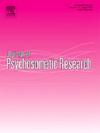产前焦虑症状及其影响因素:埃塞俄比亚城市地区的病例。
IF 3.3
2区 医学
Q2 PSYCHIATRY
引用次数: 0
摘要
背景:心理健康挑战,如抑郁和焦虑,通常会影响孕妇,并可能对母亲和胎儿产生不利的健康后果。尽管孕妇的焦虑症状影响重大,但往往没有得到充分解决。本研究旨在确定怀孕期间焦虑症状的患病率,并确定影响因素,目的是告知有效的干预措施。方法:我们进行了以社区为基础的横断面研究。我们采用整群抽样技术从埃塞俄比亚贡达尔选定的整群(子城市)中招募了940名研究参与者。我们使用爱丁堡产后抑郁量表(epds - 3a)中的三个问题(q3、q4和q5)来评估焦虑症状。我们拟合了一个二元逻辑回归模型,并计算了校正优势比(AOR),其95%的置信区间(CI)。结果:111例(11.9%)孕妇有焦虑症状(95% CI: 9.91 ~ 14.15)。与没有受过正规教育的妇女相比,受过中等教育的妇女产前焦虑的几率是没有受过正规教育的妇女的两倍(AOR 2.05; 95% CI 1.08-3.88)。同样,在过去三个月内面临食物获取问题的女性与没有食物问题的女性相比,焦虑的几率是4.60倍(95% CI 2.34-9.05);非计划怀孕的妇女与计划怀孕的妇女相比有2.53倍的几率(95% CI 1.56-4.10);而孕晚期的女性与孕早期女性相比,患病几率是前者的1.75倍(95% CI 1.10-2.79)。结论:本研究提供了在产前焦虑症状的发展中发挥作用的因素的见解。卫生保健专业人员应充分了解这些因素,并对所有孕妇实施普遍的社会心理筛查,确保及时识别有风险的孕妇,并采取干预措施,增强她们的心理健康。本文章由计算机程序翻译,如有差异,请以英文原文为准。
Antenatal anxiety symptoms and its contributing factors: The case in urban areas of Ethiopia
Background
Mental health challenges, such as depression and anxiety, commonly affect pregnant women and can have adverse health consequences for both the mother and the fetus. Despite their significant impact, anxiety symptoms in pregnant women are often inadequately addressed. This study aims to determine the prevalence of anxiety symptoms during pregnancy and identify contributing factors, with the goal of informing effective interventions.
Methods
We conducted a community-based cross-sectional study. We used a cluster sampling technique to recruit 940 study participants from selected clusters (sub-cities) in Gondar, Ethiopia. We assessed Anxiety symptoms using a set of three questions (Q 3, 4, & 5) from the Edinburgh Postnatal Depression Scale (EPDS-3 A). We fitted a binary logistic regression model and computed the Adjusted Odds Ratio (AOR) with its 95 % Confidence Interval (CI).
Result
111 (11.9 %) of pregnant women had anxiety symptoms (95 %CI: 9.91 to 14.15). Compared to women with no formal education, those with secondary schooling had twice the odds of antenatal anxiety (AOR 2.05; 95 % CI 1.08–3.88). Likewise, women who faced food access problems in the past three months had 4.60 times the odds of anxiety compared with those without food issues (95 % CI 2.34–9.05); women with unplanned pregnancies had 2.53 times the odds relative to those with planned pregnancies (95 % CI 1.56–4.10); and those in their third trimester had 1.75 times the odds compared to women in the first trimester (95 % CI 1.10–2.79).
Conclusions
This study offers insight into the factors that play a role in the development of antenatal anxiety symptoms. Healthcare professionals should be well-informed about these factors and implement universal psychosocial screening for all pregnant women—ensuring timely identification of those at risk and enabling interventions that enhance their mental well-being.
求助全文
通过发布文献求助,成功后即可免费获取论文全文。
去求助
来源期刊
CiteScore
7.40
自引率
6.40%
发文量
314
审稿时长
6.2 weeks
期刊介绍:
The Journal of Psychosomatic Research is a multidisciplinary research journal covering all aspects of the relationships between psychology and medicine. The scope is broad and ranges from basic human biological and psychological research to evaluations of treatment and services. Papers will normally be concerned with illness or patients rather than studies of healthy populations. Studies concerning special populations, such as the elderly and children and adolescents, are welcome. In addition to peer-reviewed original papers, the journal publishes editorials, reviews, and other papers related to the journal''s aims.

 求助内容:
求助内容: 应助结果提醒方式:
应助结果提醒方式:


